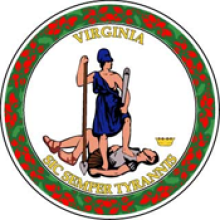Examining Virginia's Broadband Problems
The Roanoke Times recently published an extensive story about broadband, covering everything from what it is to why it is needed and who doesn't have it.
Aside from providing an excellent primer on these issues to those who are new to broadband discussions, Jeff Sturgeon writes about problems often ignored by the media, like the difficulties for companies and other entities can encounter when they need extremely high capacity connections:
Skip Garner directs the Virginia Bioinformatics Institute, which unites the powers of biology and information technology to advance medicine. It is at Virginia Tech. Garner said he, too, finds computing power a constraint. In spite of a 1 gigabit connection, "we are limited in what we could do," Garner said. When the lab's DNA sequencers pile up data, "we will often put it on a 1-terabyte drive ... and FedEx it to our customers," Garner said. An upgrade to 10 gigabits is coming. He expects it still won't be enough. It might appear that new facilities would not have such problems, but even the 5-month-old Virginia Tech Carilion Research Institute near downtown Roanoke is not satisfied with its Web service. While the speed is good at 10 gigabits, the cost it pays to service providers is staggering. "It's in the tens of thousands of dollars a month," said Executive Director Michael Friedlander.This is one world. Communities with their own fiber networks are another -- where these connections are not prohibitively expensive. And yet another world is the world of several rural Minnesota Counties, who cannot even get T.1 lines from incumbent phone providers. In Cook County, in 2008, a company was quoted $600,000 to install a T.1 line. Yes, $600,000 - I had to hear it twice to make sure I wasn't imagining it. The article explores Design Nine founder Andrew Cohill's thoughts on improving broadband access. Cohill mentions Wired West, a network we have written about previously.
"We think it's got to be treated like essential public infrastructure," he said. That way, access would be open to any service provider on equal footing. Just as anyone could launch a cab company or food delivery service over the road system, anyone will be able to use the information highway's new lanes.


